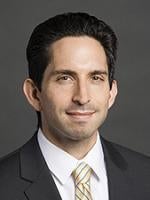On April 23, 2021, in Ford v. TD Ameritrade Holding Corp.,1 a panel of the U.S. Court of Appeals for the Eighth Circuit reversed a district court order certifying a class action alleging that TD Ameritrade committed securities fraud by failing to comply with the duty of best execution in executing customer orders. The decision deals a blow to securities class actions based on violations of a broker’s best execution obligation and highlights the difficulties investors face in certifying securities fraud claims outside a typical disclosure-based stock-drop case.
Background
The duty of best execution requires a broker-dealer to seek for its customer’s trade orders “the most favorable terms reasonably available under the circumstances.”2 The duty—described as “getting the optimal combination of price, speed, and liquidity for securities trade”—affects the net price an investor pays or receives for securities trades and is “widely understood as a subject of regulation under the Securities [] Exchange Act of 1934 and related laws.”3 The SEC, in particular, has recognized that a broker-dealer’s failure to satisfy the duty of best execution may constitute a “manipulative, deceptive, or otherwise fraudulent device or contrivance” under Section 15(c)(1) of the Securities Exchange Act, which prohibits brokers and dealers from using fraudulent or manipulative devices in connection with the sale of a security.4
In 2014, Roderick Ford, a customer of online broker TD Ameritrade, filed a putative securities fraud class action alleging that TD Ameritade’s order routing practices violated the duty of best execution by sending customer orders to trading firms that paid the company the most money through liquidity rebates or payments for order flow, rather than providing the best outcomes for customers. Ford contended that this practice harmed customers because orders went unfilled or were filled at subpar prices, and delays in execution prevented opportunities for “price improvement”—i.e., execution at a price better than the best current public quote. Ford asserted claims against TD Ameritrade for securities fraud under Section 10(b) of the Securities Exchange Act and Rule 10b-5 thereunder and against TD Ameritrade’s CEO for control person liability under Section 20(a) of the Exchange Act.
In 2017, Ford moved to certify a plaintiff class of TD Ameritrade customers in the District of Nebraska. A magistrate judge recommended denying certification, reasoning that whether each customer suffered economic loss would require scrutinizing each order individually, and so common issues would not predominate over individual ones. On review, the district court rejected the recommendation, concluding that individual issues would not predominate because Ford’s expert had developed an algorithm that could determine each customer’s economic loss. The district court consequently certified a class of “[a]ll clients of TD Ameritrade between September 15, 2011 and September 15, 2014 who placed orders that did not receive best execution, in connection with which TD Ameritrade received either liquidity rebates or payment for order flow, and who were thereby damaged.”5 The Eighth Circuit granted defendants leave to appeal the order under Rule 23(f) of the Federal Rules of Civil Procedure.
The Eighth Circuit’s Decision
A three-judge panel of the Eighth Circuit reversed, concluding that the class did not satisfy the requirement of Federal Rule 23(b)(3) that “questions of law or fact common to class members predominate over any questions affecting only individual members.”6 The Court explained that this case differed from a typical stock-drop case, where it is alleged that a defendant’s conduct artificially inflated the price of a security until a corrective disclosure revealed the truth to investors. In such cases, the alleged fraud directly affects the price of the security, and an expert may determine a uniform level of price inflation and apply it to all investors’ trades to determine economic loss. By contrast, loss caused by violation of the duty of best execution can only be determined by comparing: (a) the price at which the customer’s trades were executed; and (b) a better price allegedly available from an alternative trading source. A best-execution case thus requires proof of the circumstances surrounding each trade, the available alternative prices, and the state of mind of each investor when placing his or her order.7
To overcome this obstacle, the plaintiff’s expert claimed to have developed an algorithm that could assess execution quality, using trading data and data about the market at the time of each trade. That, however, did not resolve the Court’s concerns. According to the Court, the expert’s algorithm still would entail individualized inquiries inconsistent with Rule 23(b)(3)’s predominance requirement. Even under the expert’s approach, economic loss could not be mechanistically calculated simply by comparing each trade’s price with the National Best Bid and Offer price (NBBO), the proposed benchmark for determining loss.8 That is because a broker may not execute a trade at the NBBO price for a variety of reasons consistent with the duty of best execution, including due to a volatile market or otherwise unusual market conditions. Although the plaintiff’s expert claimed to be able to exclude these instances from loss calculations based on publicly available trading and market data, the Court agreed with the defendants’ expert that not all relevant market conditions were publicly available and exclusions would have to be determined on a case-by-case basis. Further complicating matters was that the NBBO price may not even be the best price available in each transaction, and, in fact, analysis of a subset of the plaintiff’s trades revealed a majority were executed at a price better than or equal to the NBBO. In sum, the Court held that, because injury could not be presumed across the putative class (let alone for each trade by each putative class member), common issues did not predominate over individualized ones.
Implications
The Eighth Circuit’s decision may sound the death knell for securities fraud class actions based on alleged violations of the duty of best execution. While few question that the federal securities laws impose a duty of best execution on broker-dealers, investors have found it exceedingly difficult to maintain private class actions based on alleged violations of the duty. The Eighth Circuit is only the latest court to disapprove of such claims, joining the Third Circuit (which denied class certification in its much-cited 2001 decision Newton v. Merrill Lynch, Pierce, Fenner & Smith, Inc.9 ) and the Second Circuit (which affirmed outright dismissal of such claims for failure to plead reliance in its 2018 decision Schwab v. E*TRADE Financial Corp.10). Assuming the plaintiff is unsuccessful in challenging the decision on rehearing en banc or before the Supreme Court, we do not expect to see many more wide-scale investor suits based on violations of the duty of best execution.
More broadly, the decision illustrates the tall task plaintiffs face in certifying securities fraud class actions outside a typical disclosure-based stock-drop case. Judge Paul Engelmayer of the Southern District of New York previously explained that “[h]istorically, claims of injury due not to corrective disclosures but rather to the mechanics by which shares of stock were priced during a protracted period of open-market trading have almost always been held ill-suited to classwide resolution.”11 In such cases, “trade-specific inquiries are almost always needed to ascertain whether the price a customer paid on a particular trade was, or was not, compromised by a defendant’s allegedly unlawful conduct.”12 Based on this reasoning, courts have denied certification in a variety of contexts where defendants’ alleged conduct may not have harmed investors uniformly, including claims based on issuers’ practices in allocating IPO shares and trading shares in the IPO aftermarket, brokers’ practices in marking up prices charged for individual stocks and bonds, and insiders’ failures to disclose changes to the terms of a lock-up agreement.13 Moving forward, plaintiffs’ firms may well conclude that the low probability of class certification in such cases does not justify the time and resources needed to prosecute them, and enforcement is best left to regulators.
1 -- F.3d --, No. 18-3689, 2021 WL 1583164 (8th Cir. Apr. 23, 2021).
2 Newton v. Merrill, Lynch, Pierce, Fenner & Smith, Inc., 135 F.3d 266, 270 (3d Cir. 1998).
3 Kurz v. Fidelity Mgmt. & Research Co., 556 F.3d 639, 641 (7th Cir. 2009).
4 In re Morgan Stanley & Co. Inc., Exchange Act Release No. 55726, 2007 WL 1364323, at *8 (May 9, 2007) (quoting 15 U.S.C. § 78o(c)(1)). Although the elements of a Section 15(c)(1) claim are similar to a Section 10(b) securities fraud claim, Section 15(c)(1) does not create a private cause of action. See, e.g., Eptstein v. Haas Sec. Corp., 731 F. Supp. 1166, 1180 (S.D.N.Y. 1990).
5 Ford, 2021 WL 1583164, at *1.
6 Id. at *2-3 (quoting Fed. R. Civ. P. 23(b)(3)).
7 According to the Court, the customer’s state of mind is relevant because the customer may have intended a trade to replace a prior cancelled trade at a less favorable price. In such an instance, regardless of compliance with the duty of best execution, the customer would be better off from the trade and not have suffered any economic loss. See id. at *4.
8 The NBBO is the current national best bid and national best offer as disseminated by the Consolidated Quotation System or UTP Plan Securities Information Processor. Fidelity Covington Tr., SEC No-Action Letter, 2020 WL 2539089, at *10 n.25 (May 19, 2020).
9 259 F.3d 154 (3d Cir. 2001).
10 752 F. App’x 56 (2d Cir. 2018).
11 Sicav v. Wang, No. 12 Civ. 6682(PAE), 2015 WL 268855, at *3 (S.D.N.Y. Jan. 21, 2015).
12 Id.
13 Id. (citing In re Initial Pub. Offerings Sec. Litig., 471 F.3d 24, 44 (2d Cir. 2006), Pearce v. UBS PaineWebber, Inc., No. 02 Civ. 2409-17 (GRA), 2004 WL 5282962, at *10-11 (D.S.C. Aug. 13, 2004), and Grandon v. Merrill Lynch, No. 95 Civ. 10742(SWK), 2003 WL 22118979, at *9 (S.D.N.Y. Sept. 11, 2003)).






 />i
/>i

